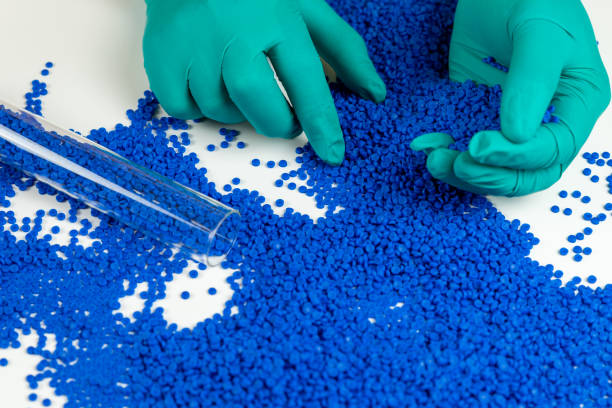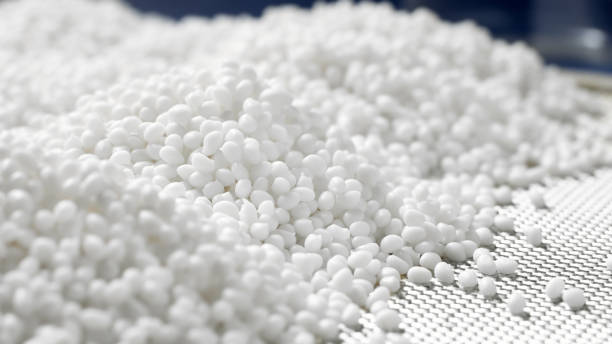We interact with polymeric materials every day, from mineral water bottles to car interior components. But many of us may wonder how these materials are produced and what processes shape them.
You can click the link below to learn more about polymers and their types.
In this article, we take a comprehensive and practical look at the manufacturing methods of polymeric materials. These methods are selected based on various factors, such as the type of material, the final form of the product, production volume, and the required mechanical strength.
Before diving into the details, it’s important to clarify a key distinction:
The term “plastic” generally refers to the final product, while “polymer” refers to the raw material, which is transformed into plastic through specific shaping processes.
🔹 Extrusion
Extrusion is considered one of the most common and versatile polymer processing methods. In this process, the polymer material is melted and forced through a die with a defined cross-section. As the material exits the die, it takes the desired shape and is then cooled.
🔸 This process is quite similar to toothpaste being squeezed out of a tube.
This method is widely used for manufacturing products such as pipes, sheets, wire coatings, plastic films, and polymer granules.
Advantages:
Excellent process control
Continuous and high-volume production
Lower cost compared to some other methods
Disadvantages:
Limited to simpler shapes
Requires cooling systems after shaping
🔹 Blow Molding
Blow molding is one of the most cost-effective methods for producing hollow plastic products such as bottles, tanks, and packaging items. In this technique, the molten polymer is first shaped into a hollow tube known as a parison, and then air is blown into it, pushing the material against the walls of the mold to form the final shape.
Types of Blow Molding:
1. Injection Blow Molding (IBM)
In this method, the parison is first formed by injection molding into a pre-form mold. It is then transferred to a blow station where compressed air is injected to form the final shape.
This technique is ideal for producing high-quality bottles with excellent dimensional accuracy.
2. Extrusion Blow Molding (EBM)
In this process, the parison is continuously extruded from the extruder and positioned between two halves of a mold. The mold closes, and air is blown into the parison to shape it.
It is commonly used for producing large bottles or industrial containers.
3. Stretch Blow Molding (SBM)
In this technique, after the parison (pre-form) is formed, it is stretched longitudinally while being blown.
This enhances the mechanical strength and transparency of the final product.
It is primarily used for making PET bottles, such as soda bottles.
Advantages of Blow Molding:
High production speed
Suitable for mass production
Lower mold cost compared to injection molding
Disadvantages of Blow Molding:
Limited to less complex geometries
Generates relatively more waste
Requires specialized machinery
Injection Molding
In this method, the polymer material is melted and injected under high pressure into a mold cavity. After cooling and solidification, the finished product is ejected from the mold.
This is one of the most precise methods for producing parts with complex geometries in large quantities.
Typical products include toys, plastic containers, electronic components, and automotive interior parts.
Advantages of Injection Molding:
High dimensional accuracy
Ideal for high-volume production
Allows the use of multiple polymers simultaneously
Disadvantages of Injection Molding:
High mold cost
More complex processing
High initial investment required

Thermoforming
In the thermoforming process, polymer sheets are heated until they become soft and pliable. These sheets are then shaped over a mold using vacuum or pressure, conforming to its surface. After cooling, the shaped product is removed from the mold and trimmed.
Applications:
This method is commonly used for manufacturing pharmaceutical packaging, disposable containers, appliance housings, and even bathtubs.
Advantages:
Low equipment cost
Short time from design to production
Suitable for low-volume production
Disadvantages:
High trimming waste
Limitations in forming complex geometries
Rotational Molding
In this process, polymer powder is placed inside a mold. The mold is then heated while rotating along multiple axes. The polymer melts and coats the inner walls of the mold evenly. After cooling, a seamless hollow product with uniform wall thickness is formed.
Applications:
Rotational molding is ideal for making water tanks, large toy components, store mannequins, and industrial parts.
Advantages:
Uniform, seamless walls
Suitable for large hollow products
Low mold cost
Disadvantages:
Longer production cycle
Not ideal for high-volume or small parts
Limited choice of raw materials
Conclusion
As we’ve seen, polymers—depending on their type, physical properties, and final application—can be shaped using various manufacturing methods. Each method has its advantages and limitations, and the choice must be made based on project requirements, budget, production volume, and polymer type.
In today’s world, where the demand for lightweight, durable, and cost-effective products is rapidly growing, understanding polymer processing technologies is a key factor in industrial success.
💬 What are your experiences or insights in this field? Share your thoughts with us!



